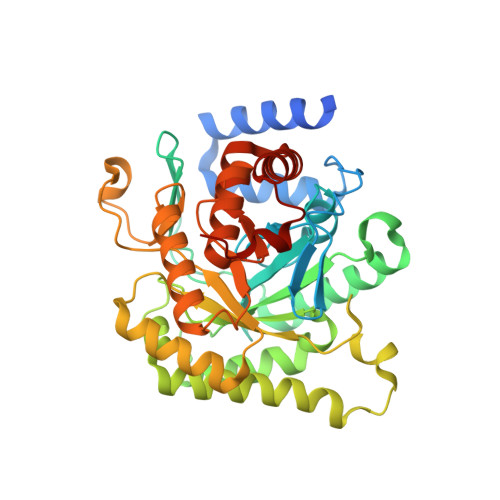The X-ray structure of Plasmodium falciparum dihydroorotate dehydrogenase bound to a potent and selective N-phenylbenzamide inhibitor reveals novel binding-site interactions.
Deng, X., Matthews, D., Rathod, P.K., Phillips, M.A.(2015) Acta Crystallogr F Struct Biol Commun 71: 553-559
- PubMed: 25945708
- DOI: https://doi.org/10.1107/S2053230X15000989
- Primary Citation of Related Structures:
5DEL - PubMed Abstract:
Plasmodium species are protozoan parasites that are the causative agent of malaria. Malaria is a devastating disease, and its treatment and control have been hampered by the propensity of the parasite to become drug-resistant. Dihydroorotate dehydrogenase (DHODH) has been identified as a promising new target for the development of antimalarial agents. Here, the X-ray structure of P. falciparum DHODH bound to a potent and selective N-phenylbenzamide-based inhibitor (DSM59) is described at 2.3 Å resolution. The structure elucidates novel binding-site interactions and shows how conformational flexibility of the enzyme leads to the ability to bind diverse chemical structures with high affinity. This information provides new insight into the design of high-affinity DHODH inhibitors for the treatment of malaria.
- Department of Pharmacology, University of Texas Southwestern Medical Center at Dallas, 6001 Forest Park Road, Dallas, TX 75390-9041, USA.
Organizational Affiliation:





















